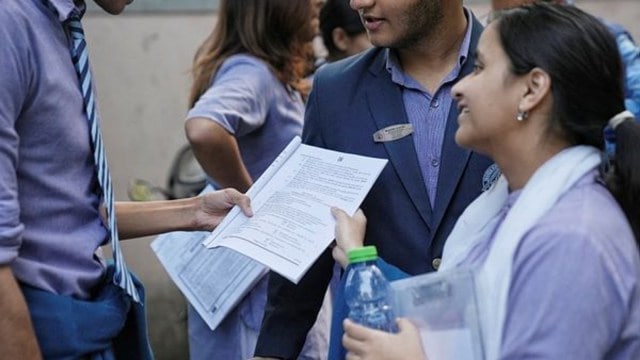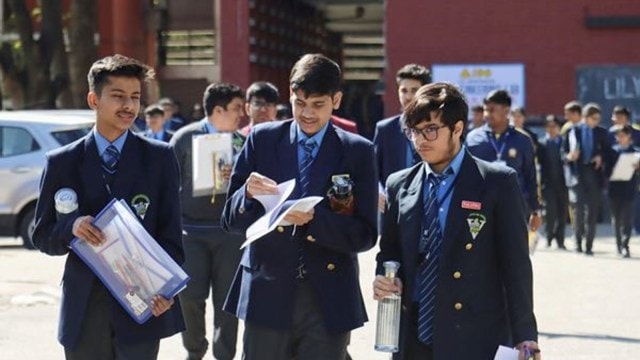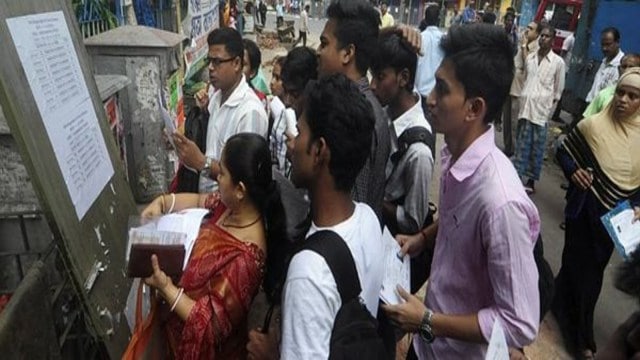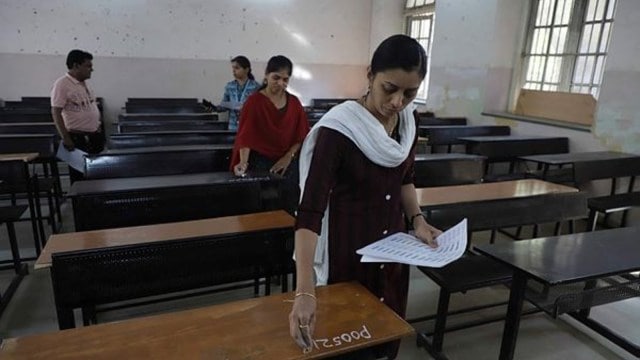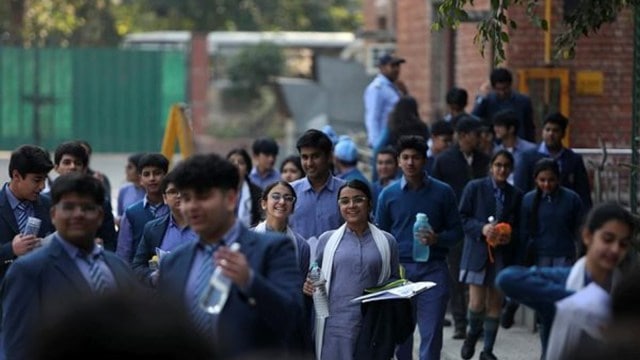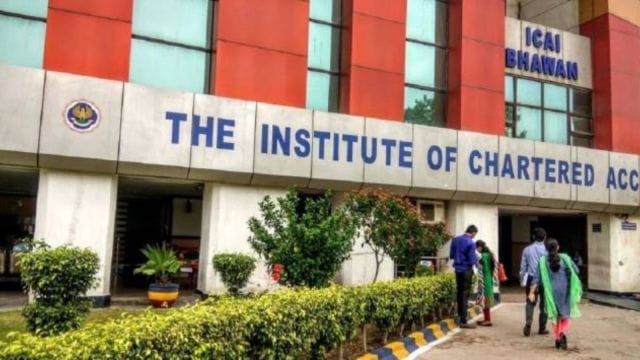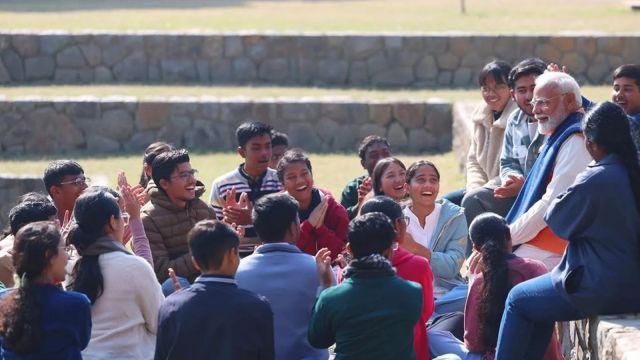
Signals from Maharashtra: Is the state’s fractured polity becoming space for de-ideologised politics?Subscriber Only
My head spun as I sat in front of the TV screen absorbing the information flowing in as the nominations closed for the Maharashtra elections. It spelt “Maha confusion”.
There are six main parties in the fray in two coalitions. The Congress, the Shiv Sena (UBT), and the Nationalist Congress Party (Sharadchandra Pawar) are part of the Maha Vikas Aghadi (MVA), while the Mahayuti is made up of the BJP, Eknath Shinde’s Shiv Sena, and Ajit Pawar’s NCP. There are more than six smaller parties allied with the two groups and others such as the AIMIM unaligned. There are also “proxy candidates”, a growing phenomenon in Indian elections.
Then there are hundreds of Independents; of them, 50 are known rebels, or “vote cutters”, many backed informally by the big daddies of the political parties to defeat the official candidates to strengthen their post-poll bargaining position. (Officially, the parties on both sides have been trying to get the rebels to withdraw, and the picture will be clear after Monday). And there will also be some “friendly fights”.
There are wheels within wheels at work in Maharashtra. In 2019, there were four main parties, with the BJP and its oldest ally Shiv Sena on the one side and the Congress and the NCP fighting on the other. When the BJP and the Sena fell apart over chief ministership, Sharad Pawar moved in for the kill to fashion the MVA. He brought together the Congress and the Shiv Sena, the unlikeliest of allies, on the same platform along with his NCP and anointed Uddhav Thackeray as CM. The BJP split the Sena in 2022 and the NCP the following year, and went on to form the government.
Today, the scenario is even more complicated, something seen in recent times. In the absence of earlier benchmarks, it makes poll predictions that much more difficult and risky.
What is more, politics has divided even families right down the middle, like the Pawars. The Pawar family from across the world would gather together once a year despite their differences. But it has become a bitter battle now. It was Sunetra Pawar versus Supriya Sule in Baramati in the Lok Sabha elections. Now it is Ajit Pawar, who has won from the Baramati Assembly seat since 1991, pitted against his young nephew Yugendra (the son of his brother) fielded by NCP (SP), making it a do-or-die battle for the supremacy of the party.
To add to voters’ woes are the confusing party symbols. An activist who has worked in the relatively prosperous villages in Satara district lamented, ”Many villagers, especially women, even the educated among them, are very confused about the symbols. They know about the ‘kamal (lotus, the BJP’s symbol)’ but all else is confusion … This may have a big impact on the election.”
The Court allowed Eknath Shinde’s Shiv Sena and Ajit Pawar’s NCP to retain the original symbol of the Sena and the NCP: bow and arrow, and clock. Thackeray’s party has been allotted a “mashal (torch)” and Pawar’s outfit a man blowing the “tutari (trumpet)”.
It would be naïve to believe there is no method to this madness. Politics being an art of “jugaad”, Indian politicians are adept at it. Shaina N C moved at the last minute to become a candidate in Mumbadevi, not of the BJP that she represented night after night on TV screens as its spokesperson, but of Shinde’s Shiv Sena. This time, the BJP, besides nominating 152 candidates, has parked 17 of its leaders as candidates of allied parties. What is to prevent them from siding with the BJP when it comes to choosing the CM, if the ruling Mahayuti is in a position to form the government again?
While the election is being fought under the leadership of Shinde, Maharashtra BJP chief Chandrashekhar Bawankule skirted the issue of who would be the Mahayuti CM if the alliance returned to power. All he was prepared to say was that it was “not on (the) agenda right now” — and was an open question.
Or take former Minister Nawab Malik’s nomination from the Muslim-dominated Mankhurd Shivaji Nagar seat on an NCP ticket. Ajit Pawar’s decision to nominate Malik was frontally opposed by the BJP, which called the former state minister a terrorist associated with gangster Dawood Ibrahim. By refusing to campaign for Malik, the BJP sent a suitable message to its core constituency all over Maharashtra.
By fielding Malik despite the BJP’s opposition, Ajit Pawar was cocking a snook at his ally. It enabled Malik to distance himself from the BJP, a move calculated to confuse and divide Muslims who stood rock-like with the MVA in the Lok Sabha polls. They were expected to vote for the Samajwadi Party’s Abu Azmi in Mankhurd, a seat he has been winning since 2009.
Maharashtra today is sending more than one message. An industrial and financial hub that thrives on political stability, the state may be moving towards an increasingly fractured polity. The large number of political players in the fray also reflects India’s diversity, growing aspirations, and assertion by every group for their share of the pie. But they also underline the growing use of fear, government agencies, and big money as tools to bring about political allegiance.
It may be rare for a Republican to become a Democrat, or vice versa, in the US where presidential elections are underway. But it is easier in India, and indeed in Maharashtra, for an NCP or a Congress leader to move to the BJP, or the Sena (UBT) to join hands with the Congress it opposed all along, underscoring the de-ideologised politics we are increasingly heading towards.
Shifting individual loyalties apart, even parties themselves are slowly transforming. Today Uddhav Thackeray’s hard Hindutva has mellowed and he has found acceptance even amongst the Muslims who voted for him in the Lok Sabha elections. Should this be read as a growing acceptance, even though it may not be openly acknowledged, that a centrist, middle-of-the-road approach is ultimately the way to go in a country as diverse as India?
Despite differences (as on V D Savarkar), the Congress agreed to do business with the Sena, which it had opposed. After the tussle over seat-sharing, and this is not without significance, the Congress finally agreed to contest only 11 of the 36 seats in Mumbai to observe “coalition dharma” when it fought 30 seats in 2019.
And yet, apart from keeping the BJP at bay, the Opposition has yet to evolve a well-articulated, alternative narrative that glues its pieces together. Sympathy for Uddhav and Pawar, a desire for the revival of the Congress to counter the BJP, the fear of Dalits about losing reservation, and the Maratha yearning for reservation, took the MVA story to an impressive 30 Lok Sabha seats earlier this year. But Assembly polls are a ball game different from a Lok Sabha election.
The ruling Mahayuti has been quick to course-correct to offset its Lok Sabha losses, with the Ladki Bahin Yojana to give money in the hands of women, the consolidation of OBC support, and the spate of social welfare schemes the Shinde government announced before the code of conduct kicked in.
“It is a cut-to-cut situation today,” a Mumbaikar remarked matter-of-factly. In such a situation, who covers the last mile faster will count. On this count, the BJP, with its organisational machinery, is better prepared.
(Neerja Chowdhury, Contributing Editor, The Indian Express, has covered the last 11 Lok Sabha elections. She is the author of How Prime Ministers Decide)

 Posts
Posts Sign up as a Teacher
Sign up as a Teacher